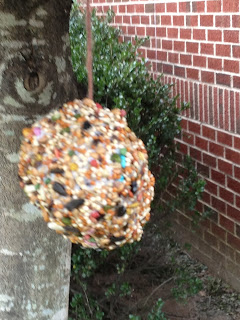If you have ever read my blog before, you know that I am passionate about including vocabulary connections in my science classroom. What you may not know, is that I am passionate about including natural vocabulary connections in all curricular areas!
 For the past several years, with the help of my wonderful mentor Kip Bisignano from Delta Education, I have implemented these strategies into my classroom. What has been the result? Well, not only have my science scores risen but my math, reading and social studies scores have risen as well. I am NOT putting more time into reading instruction - but instead am putting more reading, language and writing into my content areas. One hour is enough for guided reading!
For the past several years, with the help of my wonderful mentor Kip Bisignano from Delta Education, I have implemented these strategies into my classroom. What has been the result? Well, not only have my science scores risen but my math, reading and social studies scores have risen as well. I am NOT putting more time into reading instruction - but instead am putting more reading, language and writing into my content areas. One hour is enough for guided reading!
In thinking about the new year, I thought it would be great to have a planning guide with proven structures listed and ready for me to pull from and plan. I have created a list of 20 tried and true structures, many of which I have already blogged about. For the ones I haven't yet blogged about, well...look for them in the future!
 The actual planning sheet includes a spot for the topic you are teaching. For example, the next topic we are teaching is force and motion. I would write that general topic in the star.
The actual planning sheet includes a spot for the topic you are teaching. For example, the next topic we are teaching is force and motion. I would write that general topic in the star.
Next, I would purposefully plan what content words I would teach - like push, pull, gravity, speed, acceleration, deceleration, stop. Third, there is a spot for Science Process words or Critical thinking. We always compare and contrast in this unit as well as predict, conclude and observe. I included Related Books to remind myself to read "Rollercoaster" by Maria Frazee as well as other nonfiction books.
The last box is the place where I can dump my ideas for connections to the topic - word wall, guess my word game for morning meeting, concept maps, jigsaw activities for reading nonfiction text to clarify force and motion concepts, drawing diagrams of a roller coaster to label where we see forces at work, and highlighting vocabulary words in our science notebook itself.
I hope you can use this FREE resource for many lessons - not just in science. Please drop me a note to let me know if you used it and how it worked for you!
Comment:
 For the past several years, with the help of my wonderful mentor Kip Bisignano from Delta Education, I have implemented these strategies into my classroom. What has been the result? Well, not only have my science scores risen but my math, reading and social studies scores have risen as well. I am NOT putting more time into reading instruction - but instead am putting more reading, language and writing into my content areas. One hour is enough for guided reading!
For the past several years, with the help of my wonderful mentor Kip Bisignano from Delta Education, I have implemented these strategies into my classroom. What has been the result? Well, not only have my science scores risen but my math, reading and social studies scores have risen as well. I am NOT putting more time into reading instruction - but instead am putting more reading, language and writing into my content areas. One hour is enough for guided reading!In thinking about the new year, I thought it would be great to have a planning guide with proven structures listed and ready for me to pull from and plan. I have created a list of 20 tried and true structures, many of which I have already blogged about. For the ones I haven't yet blogged about, well...look for them in the future!
 The actual planning sheet includes a spot for the topic you are teaching. For example, the next topic we are teaching is force and motion. I would write that general topic in the star.
The actual planning sheet includes a spot for the topic you are teaching. For example, the next topic we are teaching is force and motion. I would write that general topic in the star. Next, I would purposefully plan what content words I would teach - like push, pull, gravity, speed, acceleration, deceleration, stop. Third, there is a spot for Science Process words or Critical thinking. We always compare and contrast in this unit as well as predict, conclude and observe. I included Related Books to remind myself to read "Rollercoaster" by Maria Frazee as well as other nonfiction books.
The last box is the place where I can dump my ideas for connections to the topic - word wall, guess my word game for morning meeting, concept maps, jigsaw activities for reading nonfiction text to clarify force and motion concepts, drawing diagrams of a roller coaster to label where we see forces at work, and highlighting vocabulary words in our science notebook itself.
I hope you can use this FREE resource for many lessons - not just in science. Please drop me a note to let me know if you used it and how it worked for you!
Comment:






























